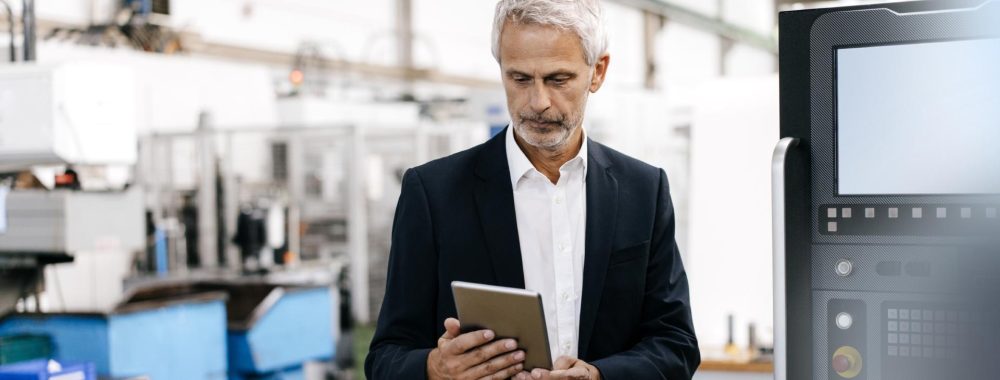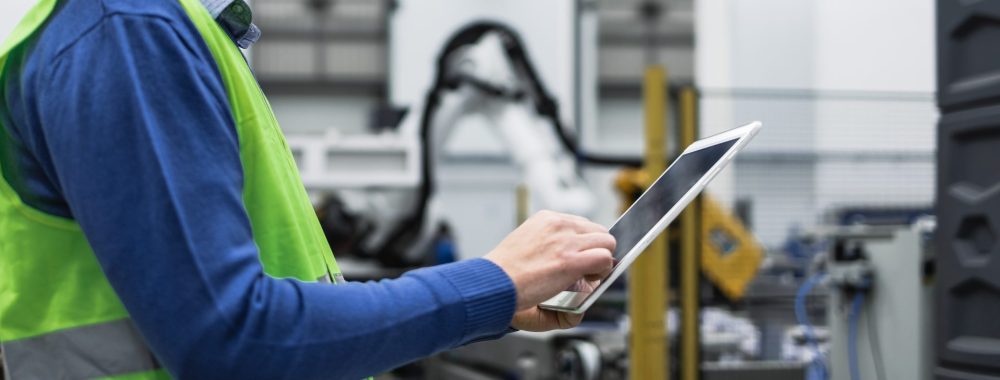Where does Industry 4.0 place 21st century companies? They are in a period of inflection and transformation due to the application of new technologies in their processes.
The aim of this is to control and manage the efficiency of both machinery and operators and thus turn them into intelligent organizations.
The implementation of recording and management systems, such as MES and SCADA, aims to generate a global and updated vision to improve processes and optimize production.
In this article, we tell you the characteristics of each system and their differences.
MES
MES stands for Manufacturing Execution System. It is an advanced system applied to industrial companies. It focuses on production, since its main mission is to plan production in terms of quality and inventory, in order to speed up and improve decision-making in the plant.
This tool was born in the 1990s with the objective of managing production orders and thus obtaining improvements in the performance of outputs generated and, therefore, in the quality of the service and/or product offered by the company, in order to also reduce production costs.
Broadly speaking, it could be defined as a tool aimed at improving Efficiency in Production Plants, also known as OEE, by monitoring and collecting data in real time from the machinery and the manual work of the operators directly linked to production and the final result.
This is why management systems are linked directly to Big Data systems.
MES systems arise as intermediaries between management systems (ERP) and control systems (SCADA, PLCs).
Their functions include:
- Providing production orders, such as: delivery date, batch, manual prioritization, etc. In other words, it facilitates the execution of orders and simultaneously helps the operator to be more efficient. In addition to having the ability to assign tasks to personnel.
- Calculate the performance (OEE) and establish the reasons for efficiency losses. These losses can be caused by machinery breakdowns, configurations and adjustments. By knowing this data, the actual percentage of plant performance and optimization can be determined.
- Reduce costs by measuring actual production costs. How are they measured? MES systems combine information related to plant, operator and raw material costs by monitoring ongoing activities to provide the real cost of each production order.
- Anticipation of possible unforeseen events and/or errors. Thanks to the continuous availability of information in real time, it is easier to foresee and visualize changes in production and to make quick and appropriate decisions in each circumstance.
Thanks to MES systems, all the work areas of a company can be connected and managed in an integrated manner.
SCADA
SCADA or Supervisory Control And Data Acquisition, is a system of supervision, control and data collection that facilitates remote management by monitoring equipment, interaction between field devices and control and optimization through a set of software and hardware.
Broadly speaking, it could be defined as a compact, flexible and customized program that collects all the data generated by the various equipment and devices that support the production process, to create a real-time conceptual map of the organization. In this way, local and remote monitoring of the different industrial plants becomes a simple and quick task.
The functions of this system are:
- Remote access. The SCADA system has the great advantage of executing its functions efficiently and quickly with remote access.
- Graphical representation of each of the activities in progress, as well as the alarms generated in the process of the same, which are alerted to both managers and operators.
- Information storage and reporting. The continuous collection of data and its facility to export and import information into external programs, the SCADA system facilitates the realization of OEE reports.
- Interaction with devices such as sensors, automatons (PLC), equipment, etc. In this way it is possible to process specific data for each process.
- Versatility. It is a flexible system that allows to add additional resources in an easy and simple way.
Gihasa case study, remote process control and supervision with Smart SCADA
MES VS SCADA
In short, MES and SCADA are two systems that work in cohesion to improve the overall performance of ongoing production processes.
MES is the system oriented exclusively to decision making and order management of production plants, while the SCADA system is a graphical representation of the global operation: machinery, operators, facilities, maintenance, etc. that facilitates control and supervision through a global vision of the state of an intelligent company in real time.
Optimize your production performance with Nexus Integra
Nexus Integra is the software platform that allows you to automatically integrate all production information from industrial plants, improving process efficiency by collecting historical and real-time data.
Versatile, simple and efficient both in its maintenance and its future scalability. It allows an agile access to information, enabling the integration of MES applications for the calculation and analysis of OEE and incorporating the results of OEE analysis to other native applications such as SCADA, reports, etc.
Contact our specialized team to receive a free consultancy for your business.


